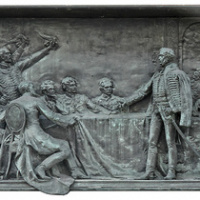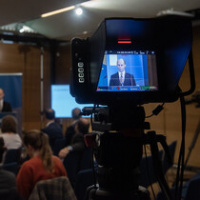- Címoldal
- Eseménynaptár
- Attila J. Mózer: Exploiting intermolecular inter...
Attila J. Mózer: Exploiting intermolecular interactions between alkyl-functionalised electron donor-acceptor pairs to enhance interfacial electron transfer rates
Előadás és vita
Időpont
2019. április 23. 14.00-15.00 óra között
Helyszín
MTA SZAB-székház - 103-104 előadóterem
6720 Szeged, Somogyi u. 7.
Részletek
Exploiting intermolecular interactions between alkyl-functionalised electron donor–acceptor pairs to enhance interfacial electron transfer rates
Attila J. Mozer
ARC Centre of Excellence for Electromaterials Science, Australian Institute for Innovative Materials, University of Wollongong, New South Wales 2522
At the heart of all photo-electrochemical conversion and storage of solar energy, there are fundamentally important electron transfer (ET) steps that need to be controlled. Controlling the driving force (difference in free energy between the electron donor and acceptor) is the most commonly used and perhaps the easiest strategy to influence the electron transfer rate. However, increasing the driving force comes at the cost of decreasing the available electrochemical energy from solar photons, leading to reduced power conversion efficiency of photo-electrochemical cells. Understanding molecular structural factors that affect the rate of electron transfer between surface bound molecules attached to a semiconductor surfaces and redox mediators in an electrolyte is vital to design the molecules of photovoltaic devices such as dye-sensitised solar cells and photoelectrosynthetic cells.
Incorporating structural factors into the design of redox active molecules is serendipitous because the effect of molecular structure, for example the size and shape of the exposed molecular orbitals or the effect of insulating alkyl chains, has not been fully clarified yet.
It this work, we asked the question to what extent insulating alkyl chains attached to acceptor molecules and redox mediators affect the rate of electron transfer? Our expectation was that alkyl chains increase the distance between the donor – acceptor therefore decrease electronic coupling, leading to slower electron transfer. To test this hypothesis, we have measured electron transfer rates by optically monitoring charge transfer using transient absorption between electron donors attached to semiconductor surfaces and redox mediators dissolved in liquid electrolyte. Two type of acceptors with and without alkyl (hexyl) chains in combination with tris(2,2'-bipyridyl)cobalt(II) complexes as electron donors with methyl and nonyl groups were used. When only the acceptor or the donor had long alkyl chains, electron transfer rate was reduced as expected. However, when both the donor and acceptor had long alkyl chains, electron transfer was enhanced up to 13 times. This is explained by an intermolecular interaction (alkyl-alkyl interaction) between the donor-acceptor pair, “trapping” the donor in the vicinity of the acceptor. This hypothesis is tested by changing the adsorption density of the acceptor on the semiconductor surface and changing the concentration of the donor in the solution.
The findings suggest exploiting intermolecular interactions could be an important strategy to enhance electron transfer at charge transfer interfaces without changing the driving force, ultimately leading to increased power conversion efficiency of photon to electrical energy conversion processes.
- Am. Chem. Soc., 2018, 140 (42), pp 13935–13944
Szervező
MTA SZAB Kéimiai Szakbizottság Fizikai-Kémiai és Anyagtudományi Munkabizottság
Kapcsolattartó
Janáky Csaba (telefon: 36-62-420511)




